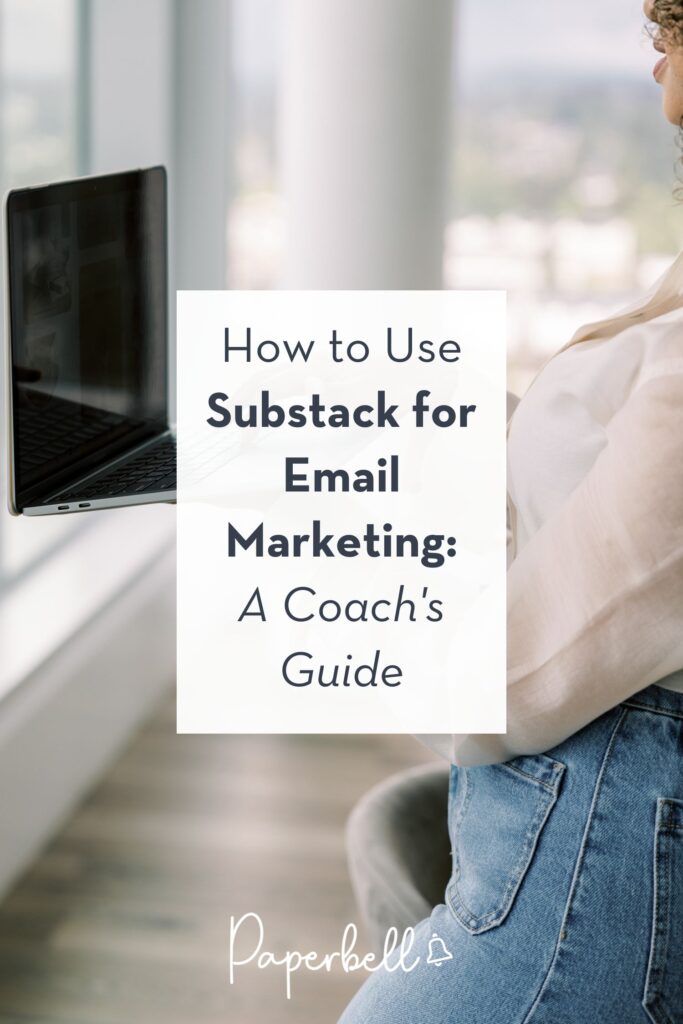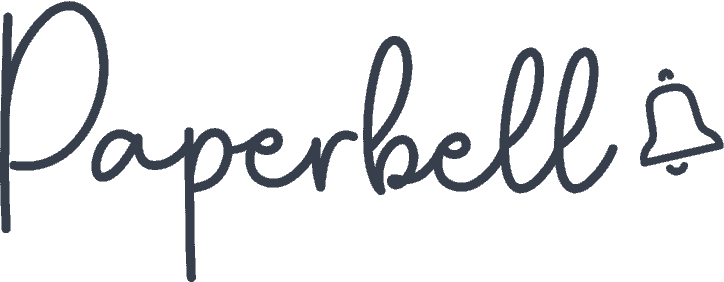If you’ve spent any time scrolling through social media or listening to business podcasts lately, you’ve probably heard people raving about Substack.
“It’s the future of email!”
“Everyone’s moving their newsletter to Substack!”
“You need to be on Substack!”
But just because everyone’s talking about Substack doesn’t mean it’s the right email marketing tool for your coaching business.
I’m not here to tell you Substack is perfect or terrible. Instead, I want to give you an honest look at what Substack actually does, how it works for email marketing, and most importantly, whether it makes sense for YOU as a coach.
By the end of this guide, you’ll know:
- What Substack is
- How to use Substack for email marketing
- Substack newsletter examples for coaches
- How Substack works with coaching platforms like Paperbell
- Whether Substack is a good way to build an email list
What is Substack?
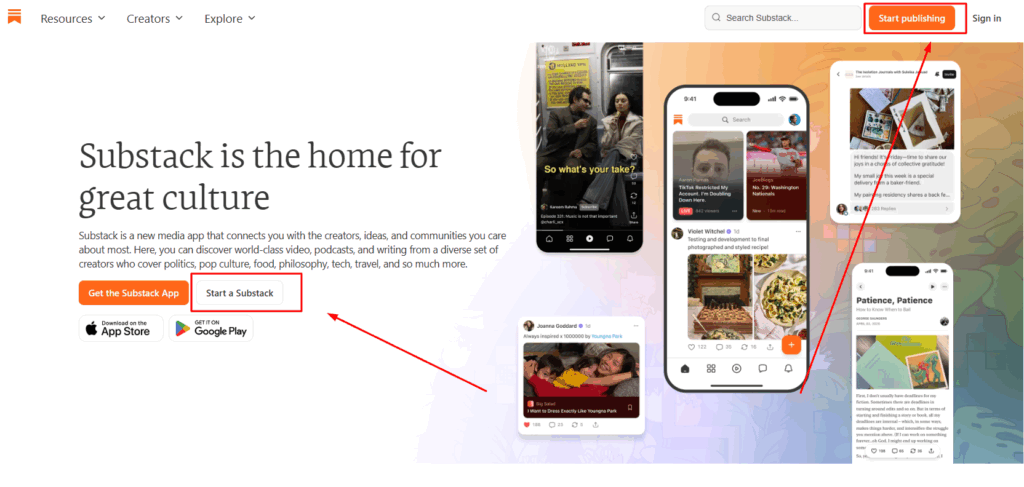
Substack is a newsletter platform that allows writers and creators to publish content directly to their subscribers’ inboxes. I like to describe it as blogging and email marketing combined.
Here’s what makes Substack different from traditional email marketing tools:
- Its focus is on long-form content and community building rather than automation and sales funnels.
- Unlike platforms designed specifically for marketing automation, Substack is built around the idea of regular newsletter publishing.
- It’s free to use, no matter how many subscribers you have.
Key features
So why are so many coaches and creators flocking to Substack? Here are the main draws:
- It’s free to use: You can start publishing newsletters on Substack without paying a penny. They only take a 10% cut if you decide to charge for subscriptions.
- Newsletter referral system to grow your email list: Substack has built-in discovery features that help readers find new newsletters.
- Simple to use: If you’ve ever felt overwhelmed by the endless features and settings in platforms like ActiveCampaign or Kit, Substack will feel like a breath of fresh air.
- Built-in monetization options: Substack makes it incredibly easy to offer paid subscriptions. You can create free and paid tiers, offer founding member rates, and manage everything from one dashboard.
- Community aspect: Through features like Substack Notes (think Threads or X, but for Substack users) and the ability to foster discussions in the comments, Substack creates a sense of community that goes beyond traditional email newsletters.
Because it’s free, the only thing you lose by trying out Substack is your time.
How to Use Substack for Email Marketing
If you’ve decided you want to try Substack, here’s your step-by-step guide to setting up and using it to start your coaching newsletter.
1. Creating your Substack account
Head to substack.com and click “Start Publishing” or “Start a Substack”.
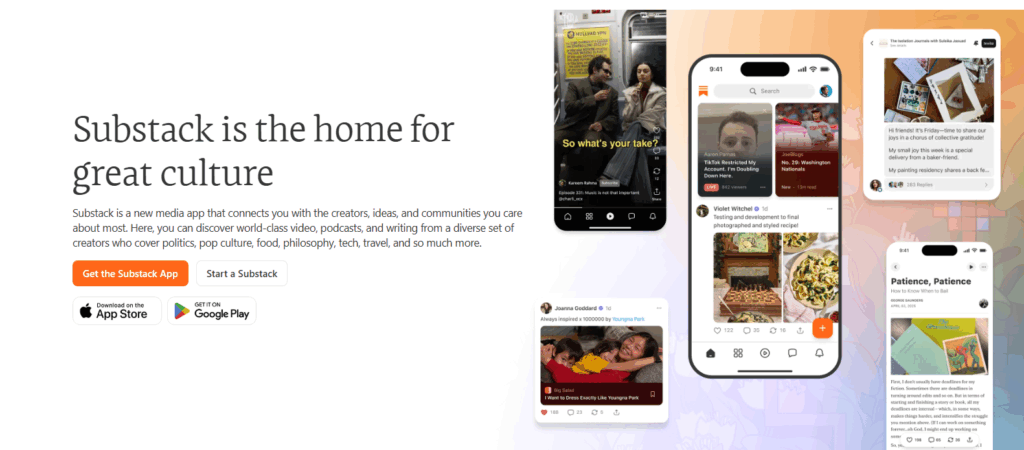
You’ll need to provide basic information like:
- Your name
- Email address
- The name of your publication
Choose your publication name carefully. This will become part of your Substack URL (yourname.substack.com), and while you can change it later, it’s easier to get it right from the start.
2. Setting up your newsletter publication
Once your account is created, you’ll want to customize your publication to reflect your coaching brand:
- Upload a profile photo and header image that represent your coaching style.
- Write a compelling “About” page that explains who you are, what you write about, and why someone should subscribe to your newsletter.
- Add a tab to link to your coaching services.
Next, set up your subscription options. Will you offer free content only, or will you have paid tiers? What will paid subscribers get that free subscribers won’t?
3. Writing and sending your first newsletter
Click “Create New” and select “Post” to start writing.
From there, you’ll see that Substack’s editor is straightforward. You can add:
- Headings
- Images
- Videos
- Links
And none of it requires any complicated formatting.
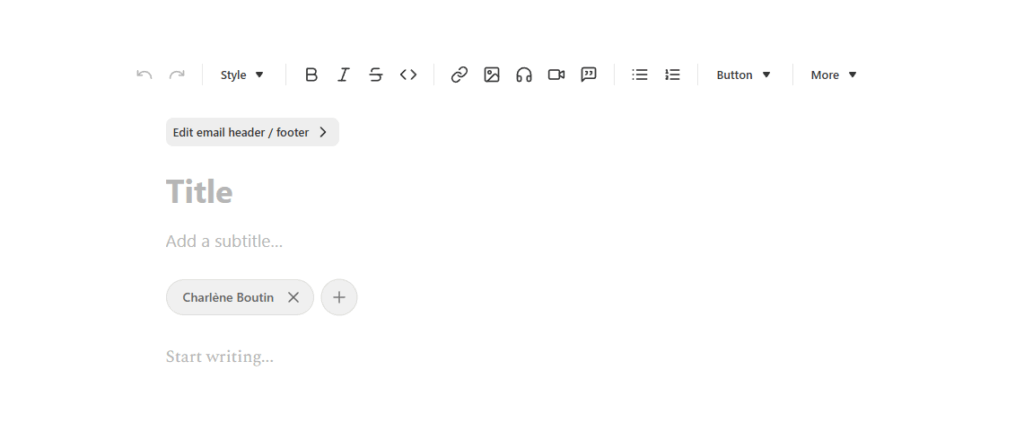
Write your subject line (this is what appears in subscribers’ inboxes), then craft your newsletter content. You can save drafts as you go, so there’s no pressure to finish in one sitting.
When you’re ready to publish, you’ll choose whether to send it to all subscribers, just free subscribers, or just paid subscribers. You can also schedule posts to go out at a specific time.
Don’t overthink your first newsletter. It doesn’t need to be perfect. Your subscribers signed up because they’re interested in what you have to say, not because they expect a polished magazine article every time.
4. Building your subscriber list
Growing your Substack subscriber list works differently from traditional email list building. Since Substack doesn’t integrate with lead magnet landing pages, you’ll need to get creative:
- Share your Substack link on social media regularly.
- Add it to your Instagram bio, your LinkedIn profile, and your Twitter/X header.
- Mention it in your podcast appearances or YouTube videos if you create content on those platforms.
- Embed a Substack subscribe form on your website if you have one.
The key difference here is that people are subscribing to your newsletter specifically, not entering your world through a lead magnet and then receiving your newsletter as a bonus.
Pro tip: Paperbell now integrates with Substack! Create your free account now to start easily sharing your Substack on your coaching site.
5. Using Substack’s discovery features (Recommendations, Notes)
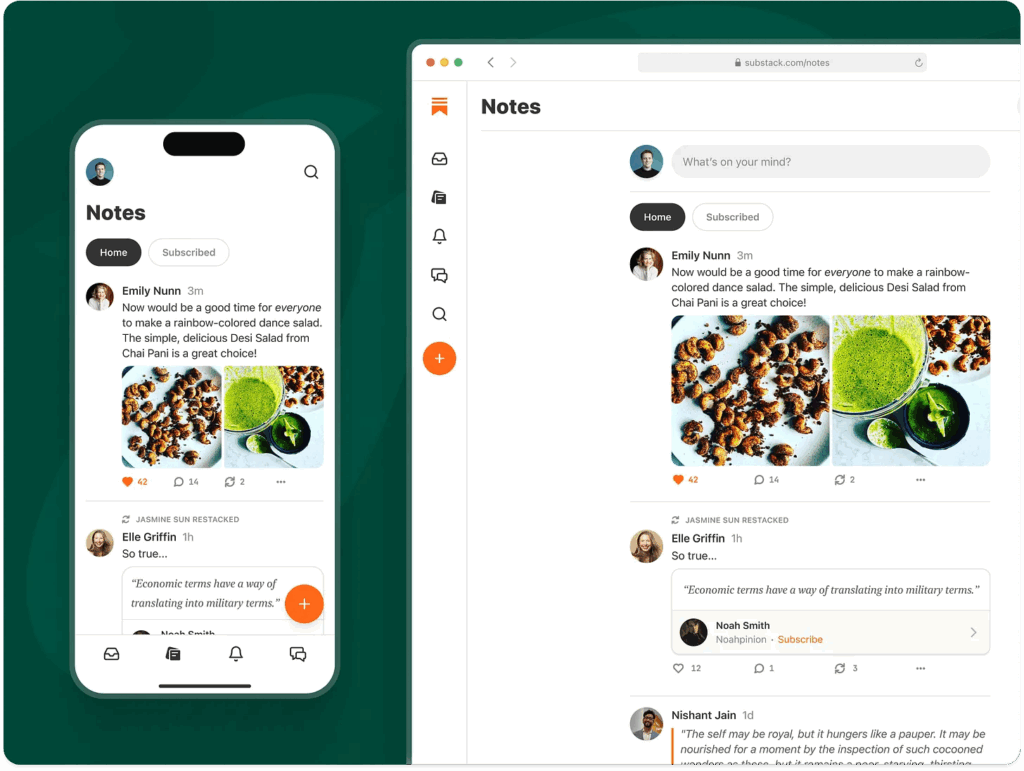
Substack has built-in features designed to help new readers discover your publication.
Recommendations allow you to suggest other newsletters to your subscribers, and those creators can recommend you back. This creates a network effect where engaged readers discover new publications they might love.
Substack Notes is a social feed where you can share short updates, thoughts, and snippets from your newsletters. It functions similarly to Twitter/X and can help you connect with other Substack writers and potential subscribers outside of your newsletter.
Use these features consistently. You can:
- Engage with other creators’ Notes
- Recommend publications that align with your values
- Participate in the Substack community
This is one of the platform’s biggest advantages over traditional email marketing tools.
Can Substack Be Used for Email Marketing?
Here’s where we need to get honest about what Substack can and can’t do for your coaching business.
What Substack does well for email marketing and what it doesn’t
Substack excels at simple, regular newsletter publishing. If your goal is to write weekly or monthly emails to your audience where you share insights, stories, and updates, Substack handles this beautifully.
The platform also shines when it comes to audience growth through its discovery features. Unlike traditional email platforms where growth depends entirely on your own marketing efforts, Substack’s recommendation system and Notes feature can bring new subscribers to you organically.
The community aspect is another win. Substack feels more like a social platform than an email tool, which means your subscribers can engage with each other in the comments and feel part of something bigger than just a mailing list.
But here’s what Substack doesn’t do: automation.
- You can’t set up welcome sequences that automatically send when someone subscribes.
- You can’t create drip campaigns that nurture leads over time.
- You can’t segment your list based on interests or behaviors and send targeted content to different groups.
Substack is designed for traditional newsletter publishing, not email marketing in the modern sense. Every email you send goes out manually to your entire list (or your free vs. paid tiers).
There’s no way to create multiple entry points with different lead magnets that trigger different automated sequences.
When Substack makes sense for coaches vs. when it doesn’t
Substack makes sense when:
- You’re discovering your writing style and voice as a coach and don’t want to pay for premium features. Substack’s free tier is genuinely useful, making it perfect for coaches just starting to build an email presence.
- You want to keep things simple with your newsletter. If you like the idea of writing and sending without worrying about automation, tags, or complex workflows, Substack’s simplicity is a feature, not a bug.
- You want to build an audience using the Substack ecosystem and don’t intend to use other list-building strategies like Facebook ads. The platform’s built-in discovery can work well if you’re committed to engaging with the Substack community.
- You want to transition from a coaching business to a newsletter business, where newsletter monetization is more important than selling your coaching packages. Some coaches eventually pivot to making their primary income from paid subscriptions rather than one-on-one coaching.
Substack doesn’t make sense when:
- You have multiple dream client avatars that need to be addressed differently in email marketing. Let’s say you serve both career coaches and life coaches and want to send different content to each group. Substack won’t support that.
- You want to automate parts of your email marketing strategy. Let’s say you’re planning to create a welcome sequence, a post-purchase sequence, or a full drip sequence that runs in the background. You’ll need a traditional email platform.
- You have multiple lead magnets or entry points into your email list. Substack doesn’t integrate with landing pages or opt-in forms the way other platforms do. This makes it difficult to offer different resources to different segments of your audience.
- You don’t need to monetize the content of your newsletter itself because your priority is selling your coaching packages or other offers. If your newsletter exists primarily to nurture leads toward booking coaching sessions, traditional email tools will serve you better.
Assess your current coaching business and weigh the pros and cons before you decide how much time to invest on the platform.
Substack Newsletter Examples for Coaches
Let’s look at some real coaches who are successfully using Substack so you can see what’s possible.
Marco Altini
Marco Altini runs a coaching-focused Substack called CoachCorner, where he shares his training philosophy and coaching approach.
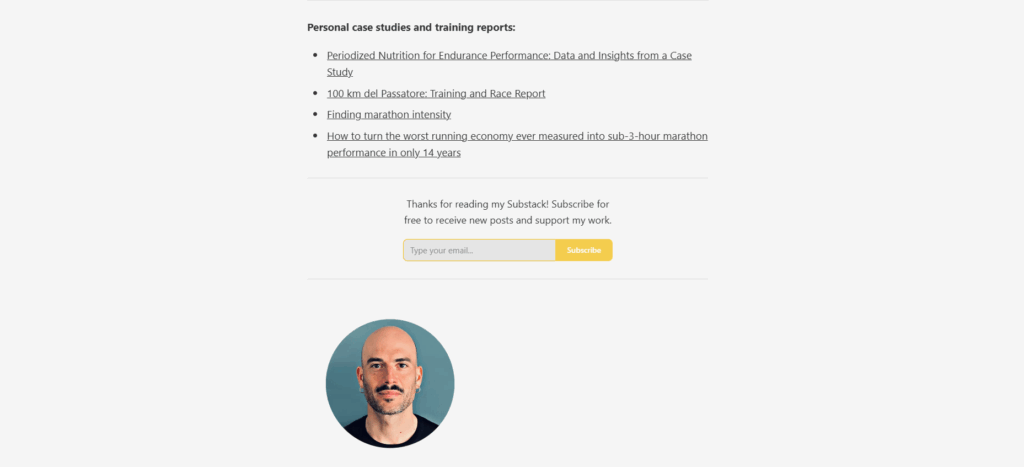
He uses his newsletter to share case studies of his work, which builds trust with potential clients. He also provides deep insights into his process and methodology, positioning himself as an authority in endurance coaching.
What makes Marco’s Substack effective is how he balances educational content with personal philosophy. Readers get a clear sense of who he is as a coach and whether his approach aligns with what they’re looking for.
Adrienne J. Clarke
Adrienne J. Clarke takes an interesting meta approach. She’s a Substack coach who runs a publication teaching others how to grow on Substack.
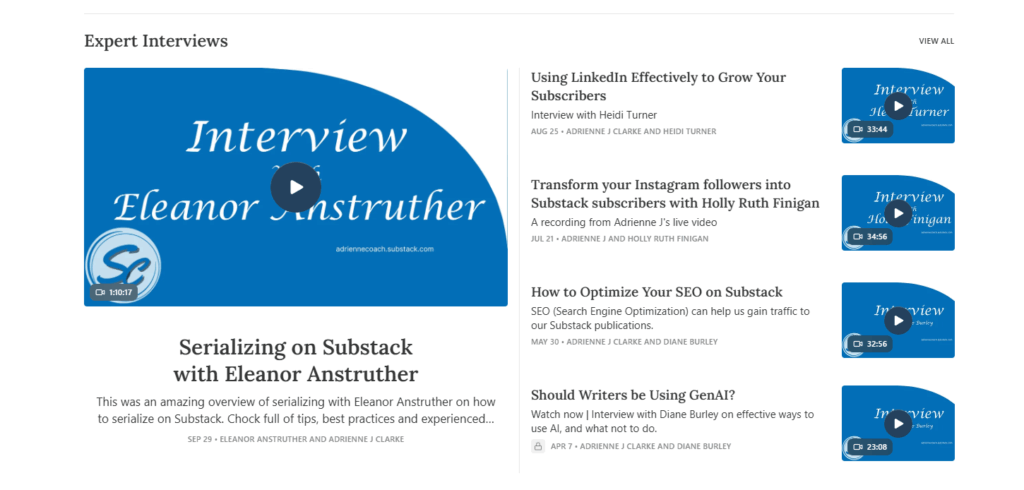
Her publication showcases:
- Expert guest interviews
- Detailed tutorials
- A podcast called Cool People on Substack
But she also uses her platform to showcase different ways in which you can work with her.
Sarah Novaro
Sarah Novaro is a singer-songwriter and Jade Egg coach who uses Substack to share insights about her unique coaching method.
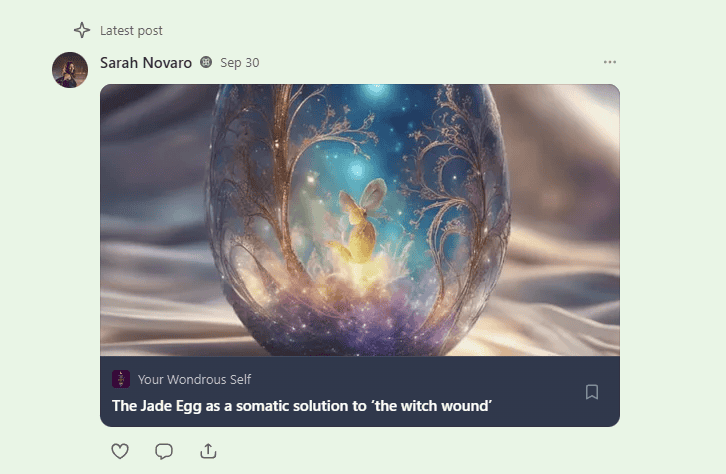
As we covered in Sarah’s case study, she uses Substack to connect with potential clients, while using Paperbell to handle the actual client management and booking process.
This is a smart combination that I’ll explore more in the next section.
Types of content that work well on Substack
Based on how successful coaches use the platform, here are content types that tend to resonate:
- Authority-building content works exceptionally well on Substack. Deep dives into your methodology, explanations of common misconceptions in your niche, and thought leadership pieces help establish you as an expert.
- Thought leadership and essays give you space to explore ideas more thoroughly than social media allows. Substack readers expect and appreciate longer, more nuanced content.
- Interviews with other experts add variety to your newsletter and provide value through different perspectives. This also helps you build relationships with other professionals in your field.
- Case studies and client stories (with permission, of course) demonstrate your coaching impact in a concrete way that theoretical content can’t match.
The content formats you use depend on how you best communicate. Substack supports:
- Images
- Embedded videos
- Video uploads
- Voice notes
- Text-only publications when you want to keep it simple
Some coaches write long essays, others share shorter updates with images, and some even record audio versions of their newsletters.
Experiment to find what feels natural and what your audience responds to.
How Substack Works with Your Coaching Platform Like Paperbell
Substack and your coaching platform don’t need to be in competition. They can work together, each serving a different purpose in your business.
Using Substack for content and authority building
Think of Substack as your content home and authority-building tool. This is where you:
- Publish your ideas
- Share your expertise
- Build relationships with your audience over time
Your Substack newsletter keeps you top of mind with potential clients. It gives them a chance to get to know your voice, understand your approach, and decide if they resonate with your coaching style before they ever book a session.
Using Paperbell for client management and bookings
While Substack handles your content and community, Paperbell handles the business side of coaching:
- Your coaching packages (hosted on a beautiful branded website)
- Client management
- Scheduling
- Payments and contracts
- Intake forms
- Plus everything else you need to actually run your coaching practice
When someone reads your Substack and decides they want to work with you, you can direct them to your Paperbell site. Once there, they can:
- View your coaching packages
- Book sessions
- Complete all the necessary paperwork automatically
- Access resources you’ve shared with them
And now that Paperbell integrates with Substack, anyone who visits your coaching website can navigate to your publication with ease, in addition to all your other social media platforms.
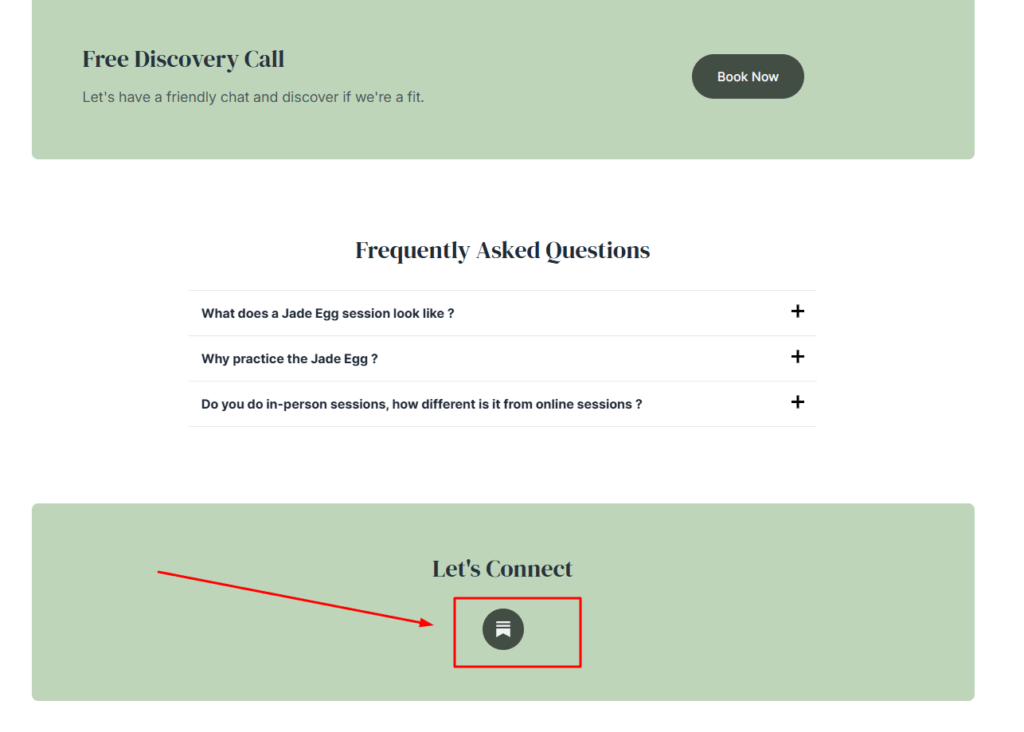
Why you might want both tools serving different purposes
Using Substack and Paperbell together gives you the best of both worlds because:
- Substack’s discovery features and community aspects help you reach new potential clients.
- Paperbell handles everything related to actually coaching clients, from the first booking to payment processing to session management to content delivery.
- You can write your regular Substack newsletter to build authority and stay connected with your audience.
- When you want to invite readers to work with you, include a link to your Paperbell coaching site in your newsletter.
And just like Substack, there’s no risk in trying Paperbell. Grab your free trial now to start sharing your coaching website with your Substack subscribers.
Is Substack a Good Way to Build an Email List?
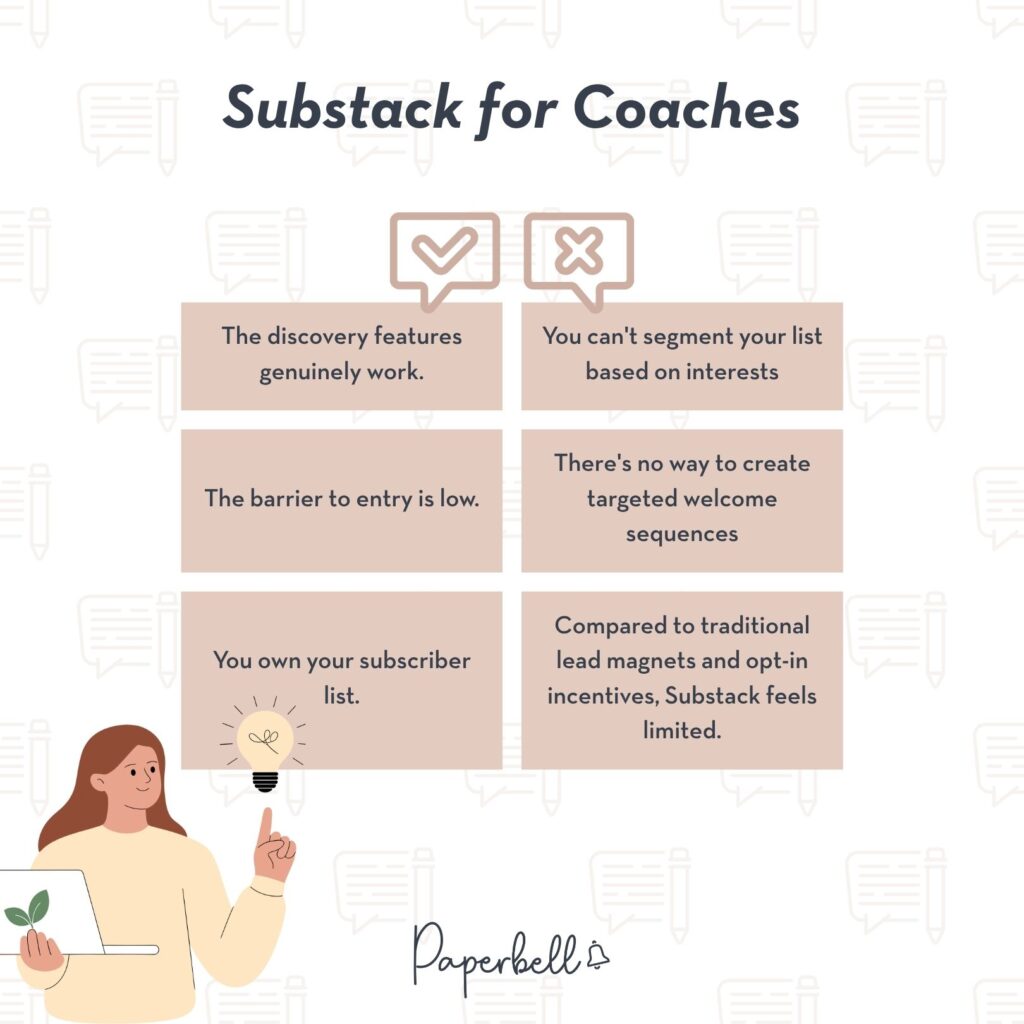
Let’s tackle this question directly because it’s not an easy yes or no.
Pros of using Substack for list building
- The discovery features genuinely work. If you’re active in the Substack community and consistently publish quality content, you can grow your subscriber list without spending money on ads.
- The barrier to entry is low. People are more willing to subscribe to a Substack newsletter than fill out a form for a lead magnet, especially if they’re already on the platform.
- You own your subscriber list. Unlike social media followers, you can export your Substack subscribers and take them with you if you ever decide to move to another platform.
Cons and limitations for coaching businesses
- You can’t segment your list based on interests or create multiple entry points for different types of clients. Everyone who subscribes gets the same newsletter.
- There’s no way to create targeted welcome sequences or nurture different leads differently based on where they are in their journey.
- If you’re used to traditional lead magnets and opt-in incentives, Substack’s approach feels limited. You’re essentially asking people to subscribe to your newsletter without offering a specific resource in exchange.
What coaches should consider before choosing Substack
If you’re primarily focused on building authority and community, and you’re comfortable with a simpler approach to email, Substack can work well.
If you need sophisticated segmentation, automation, or multiple funnels for different coaching offerings, you’ll want a traditional email platform instead.
Alternative approaches for coaches
Many coaches use both. They maintain a Substack for community and content, while also building a segmented email list on a platform like ConvertKit or MailerLite for more targeted marketing.
This approach gives you flexibility but does require managing two systems.
Another option is to start with Substack to find your voice and build initial momentum, then transition to a traditional email platform once you’ve validated your approach and are ready for more sophisticated marketing.
Start Using Substack the Smart Way
Substack isn’t the perfect email marketing solution for every coach, but it might be exactly what you need right now.
If you’re just starting out and want a simple way to build authority through consistent writing, Substack’s ease of use and built-in discovery features make it worth trying. If you need sophisticated automation and segmentation for your coaching business, pair Substack with a traditional email platform or skip it altogether.
The smartest approach? Use the right tool for each job. Let Substack handle your content and community building, while Paperbell manages your coaching business with scheduling, payments, contracts, and client management all in one place.
Try Paperbell free to see how simple running your coaching practice can be.
FAQs About Using Substack for Email Marketing
Can Substack be used for email marketing?
Yes, but with limitations. Substack works well for simple newsletter publishing and community building. It doesn’t support automation, segmentation, or complex email marketing funnels that many coaching businesses need.
Is Substack a good way to build an email list?
Substack can help you build an engaged subscriber base through its discovery features and community aspects. However, it lacks the segmentation and targeting capabilities that traditional email platforms offer for business growth.
Can I use Substack instead of Mailchimp?
It depends on your needs. Substack is simpler and better for straightforward newsletters, while Mailchimp offers more marketing automation and segmentation. If you just want to send regular newsletters, Substack works great.
Can I export my subscribers from Substack?
Yes. Substack allows you to export your subscriber list at any time, which means you’re not locked into the platform. This gives you flexibility to move to another tool if your needs change.
